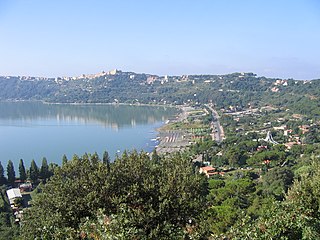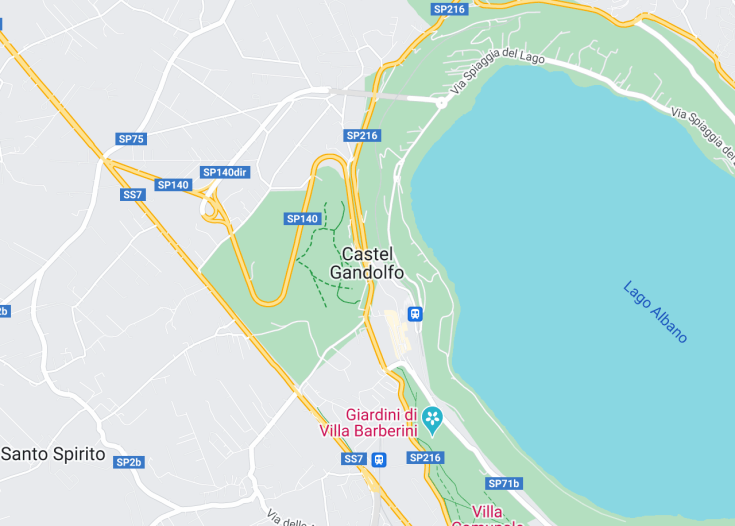Castel Gandolfo, Italy, renowned for its scenic beauty and historical significance, offers travelers a unique blend of cultural heritage and serene landscapes. Perched above Lake Albano, this picturesque town is best known for the Papal Palace, a traditional summer retreat for popes since the 17th century. Famous for its religious history and stunning villas and gardens which are open to the public, Castel Gandolfo provides a perfect escape into Italy’s rich history and breathtaking natural surroundings, offering insights into Papal life while embracing the tranquil pace of lakeside living.
When visiting Castel Gandolfo, ensure to check the opening hours of the Papal Palace and Gardens, as they can vary, especially around religious holidays.
Pack a picnic to enjoy by Lake Albano. The picturesque views coupled with the local cuisine offers a perfect backdrop for relaxation.
Top things to do & see in Castel Gandolfo
Select the following sights and activities to discover best tickets and tours available in Castel Gandolfo.
Exploring Castel Gandolfo: A Papal Sanctuary
| Country | Italy |
| Time in Castel Gandolfo | GMT+1 |
| Language spoken | Italian |
| Population | 8,850 (source: ISTAT, 2021) |
| Currency | Euro (€, EUR) |
| Airports |
|
Located about 25 kilometers southeast of Rome, Castel Gandolfo is best known as the summer residence of the popes. The town occupies a spot overlooking Lake Albano, a position offering dramatic lake views and a cooler climate, making it a favored retreat from the Roman heat. The apostolic palace and its adjacent Barberini Gardens are open to visitors, offering a unique glimpse into the lifestyle of the papacy outside the Vatican. The town itself is charming, with narrow lanes and small boutique shops offering an array of local crafts and gastronomic products.
Where is Castel Gandolfo?
Castel Gandolfo is situated in the Metropolitan City of Rome in the Lazio region of Italy, perched above Lake Albano.
Distances:
| Route | Distance by car | Time by car |
|---|---|---|
| Rome to Castel Gandolfo | 15 mi (24 km) | Approximately 40 minutes |
| Naples to Castel Gandolfo | 140 mi (225 km) | Approximately 2 hours 30 minutes |
What is Castel Gandolfo famous for?
Castel Gandolfo is internationally recognized for its Apostolic Palace where the Pope resides during summer months, recent popes have opened the gardens and palace to public tours, adding to its global appeal.
History
Covering a rich tapestry of time, Castel Gandolfo’s history is as picturesque and profound as its scenic views over Lake Albano. Nestled in the hills of Lazio, this Italian gem has served various roles—from a quiet pastoral village to a favored papal retreat.
Pre-Roman and Roman Period (Before 4th century BC – 5th century AD)
Initial settlements in the Castel Gandolfo area date back to pre-Roman times, inhabited by Latin and then Roman peoples. The town’s strategic location overlooking the Alban Lake made it a prime locale for the Roman aristocracy, including Domitian who built a massive villa here, remnants of which are still visible today.
Medieval Period (5th century AD – 15th century AD)
After the fall of the Roman Empire, Castel Gandolfo witnessed a period of neglect until it was rediscovered as a fortified bastion during the turbulent Middle Ages. The Gandolfo family, from which the town derives its name, fortified the village, adminstrating it until it came under the control of the Papal States.
Renaissance to the 18th Century (15th century – 18th century)
During the Renaissance, the beauty of Castel Gandolfo captivated the attention of the papacy. Pope Urban VIII commissioned the construction of the Papal Palace in the 17th century, designed by Carlo Maderno. This period marked the beginning of the town’s association as a summer residence for popes, a tradition that continued for centuries.
19th Century to Present Day
In more recent history, notably during the tumult of World War II, the Papal Palace in Castel Gandolfo extended refuge and aid to over 12,000 displaced persons. Post-war, it continued to serve as a summer residence for popes, with Pope John Paul II and Pope Benedict XVI spending extensive periods here. Today, parts of the Papal Palace and its immaculate gardens have been opened to the public, allowing a deeper insight into its storied past and present allure.
Visit Castel Gandolfo
What to see and do in Castel Gandolfo
The charming town of Castel Gandolfo offers a plethora of sights and activities for visitors:
- The Papal Palace: Once a summer retreat for popes, its rooms and gardens are now open for public tours.
- Lake Albano: Engage in water sports, or enjoy a leisurely walk around this volcanic crater lake.
- The Barberini Gardens: Explore these meticulously landscaped gardens, offering panoramic views over the surrounding countryside and lake.
- Local Gastronomy: Sample traditional Roman and Italian dishes in the quaint restaurants dotting the town.
- Archaeological Sites: Visit the ruins of Domitian’s Villa and discover ancient Roman history.
Festivals in Castel Gandolfo
Each year, Castel Gandolfo hosts a variety of events that attract visitors from near and far. Key events include the summer ‘Festival of the Patron Saint’, celebrated with much fervor every August, and the picturesque Christmas markets held during the festive season.
Best time to visit Castel Gandolfo
The most opportune time to visit Castel Gandolfo is between late spring and early fall when the weather is most pleasant—ideal for enjoying outdoor activities and the town’s scenic beauty.
Is Castel Gandolfo worth visiting?
Indeed, Castel Gandolfo is very much worth visiting. Whether it’s the historical depth seen in its ancient villas and the Papal Palace, the natural tranquility of Lake Albano, or the genuine warmth of its local community, Castel Gandolfo offers a serene yet enriching escape from the bustle of modern life. Its unique blend of history, culture, and natural beauty makes it a captivating destination for any traveler.









